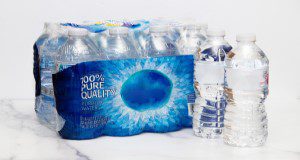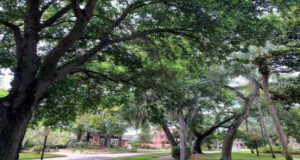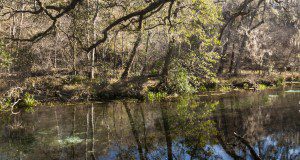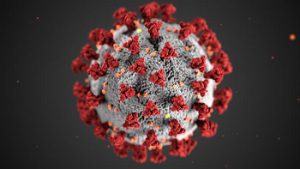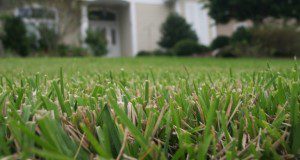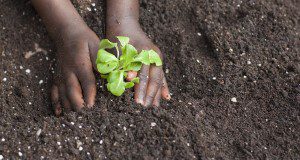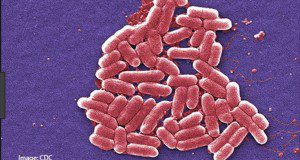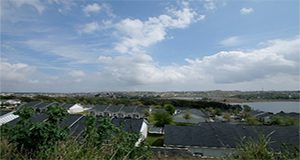Private well users are responsible for the management and protection of their wells. This new 4-page EDIS publication is for Florida homeowners who are interested in learning more about their well-water system and understanding how to properly shock, or disinfect, the well if there is evidence of drinking water contamination. Written by Yilin Zhuang and Mary Lusk, and published by the UF/IFAS Department of Soil and Water Sciences.
https://edis.ifas.ufl.edu/ss700
Tag: Mary Lusk
Florida’s Urban Forest: A Valuation of Benefits
This new 13-page article combines canopy coverage data from all of Florida’s metropolitan and micropolitan areas with ecological models developed by the USDA Forest Service to calculate several key benefits of urban trees and an approximation of their monetary value. Benefits of urban trees include carbon sequestration/storage, air pollution filtration, and stormwater mitigation. Written by Drew C. McLean, Andrew K. Koeser, Deborah R. Hilbert, Shawn Landry, Amr Abd-Elrahman, Katie Britt, Mary Lusk, Michael G. Andreu, and Robert J. Northrop, and published by the UF/IFAS Environmental Horticulture Department.
https://edis.ifas.ufl.edu/ep595
Septic Systems and Springs Water Quality: An Overview for Florida
Wastewater carries pathogens, nutrients (nitrogen and phosphorus), and trace organic chemicals that may be harmful to human health and ecosystem functioning. Thus, proper treatment of wastewater is crucial. While septic systems can be one means of effective wastewater treatment, there are some special considerations for their use in Florida because of unique geography and sandy soils. The purpose of this new 6-page publication of the UF/IFAS Department of Soil and Water Sciences is to explain the basics of how septic systems work and how they can affect springs water quality in Florida, with a special emphasis on potential N loading from septic systems. This document is intended for homeowners, the general public, and county, city, and other local personnel tasked with managing water quality in areas with septic systems. Written by Mary Lusk, Andrea Albertin, Whitney Elmore, William Lester, and James Moll.
https://edis.ifas.ufl.edu/ss693
Wastewater and Septic System Management for the COVID-19 Virus: Frequently Asked Questions
This new 3-page publication of the UF/IFAS Department of Soil and Water Sciences answers common questions about the potential role of wastewater and septic systems in transmission of COVID-19. It is intended as guidance for the general public. Written by Mary G. Lusk.
https://edis.ifas.ufl.edu/ss692
Landscaping on or near Septic Drain Fields
Septic systems are common throughout most rural areas, and their care and maintenance are essential to the health of people, wildlife, livestock, agricultural commodities, and water resources. One way to ensure optimal performance of your septic system is to landscape appropriately near the drain field. The purpose of this new 3-page publication of the UF/IFAS Department of Soil and Water Sciences is to provide landscape management guidance for septic system drain fields. Information presented here will be useful for homeowners, landscape management professionals, and Extension agents who work in horticulture, natural resources, agriculture, and family services. Written by Whitney C. Elmore, William Lester, James Moll, Andrea Albertin, and Mary Lusk.
https://edis.ifas.ufl.edu/ss687
Urban Fertilizer Ordinances in the Context of Environmental Horticulture and Water Quality Extension Programs: Frequently Asked Questions
Excess nitrogen (N) and phosphorus (P) in water bodies are a leading cause of water quality degradation statewide. More than 50 Florida counties and municipalities now have formal fertilizer ordinances, which in some cases include fertilizer blackouts, or bans on the usage of N and P fertilizers during certain times of the year. This 8-page document provides information on the underlying issues of fertilizer use, with an emphasis on an urban setting, and outlines the current state of the science on urban fertilizers and water quality in Florida. Written by Michael D. Dukes, Lisa Krimsky, Mary Lusk, Laurie Trenholm, Bryan Unruh, Michelle Atkinson, and Rao Mylavarapu, and published by the UF/IFAS Department of Agricultural and Biological Engineering, February 2020.
https://edis.ifas.ufl.edu/ae534
Soils and Fertilizers for Master Gardeners: Soil Physical Characteristics
Soils are a foundational component of the landscape, providing a medium for plant root growth and playing a crucial role in nutrient cycling and water movement across the landscape. This new 7-page article describes the physical properties of soils, including soil formation in Florida, the soil profile, and water dynamics within soils, and provides a thorough reference for Master Gardeners and other individuals searching for a basic understanding of soil dynamics to apply to residential landscapes. Written by Amy L. Shober, Alexander J. Reisinger, Mary G. Lusk, and Sally Ann Scalera and published by the UF/IFAS Department of Soil and Water Sciences.
https://edis.ifas.ufl.edu/mg458
The Importance of Soil Health in Residential Landscapes
This 6-page publication’s purpose is to educate master gardeners and homeowners about the principles of soil health as well as practices that harm or nurture soil health at the residential scale. It also includes a description of the soil food web and the microorganisms that comprise it. This new publication of the UF/IFAS Department of Soil and Water Sciences was written by Sally Scalera, Alexander J. Reisinger, and Mary Lusk.
http://edis.ifas.ufl.edu/ss664
A Brief Summary of the Water Bill, SB 552
This 5-page document written by Lisa Krimsky, Andrea Albertin, Charles Barrett, James Fletcher, and Mary Lusk and published by the UF/IFAS Program in Fisheries and Aquatic Sciences of the School of Forest Resources and Conservation is intended to act as a quick reference guide and is not inclusive of all measures in SB 552. This summary addresses the Florida Springs and Aquifer Protection Act, the Central Florida Water Initiative, Northern Everglades and Estuaries Protection, and Pilot Programs for Alternative Water Supply.
http://edis.ifas.ufl.edu/fa205
Onsite Sewage Treatment and Disposal Systems: Trace Organic Chemicals (SL352/SS554)
 Trace organic chemicals are potentially harmful to human and ecosystem health. They frequently occur in wastewater from septic systems and can be found in concentrations orders of magnitude higher than typical concentrations reported in centralized treatment plant wastewater. This 7-page fact sheet identifies common trace organic chemicals of concern in wastewater and their sources, and summarizes current research on the fate and transport of these chemicals in septic systems. Written by Gurpal S. Toor, Mary Lusk, and Tom Obreza, and published by the UF Department of Soil and Water Science, November 2011. (photo CC BY-SA 3.0 Mila)
Trace organic chemicals are potentially harmful to human and ecosystem health. They frequently occur in wastewater from septic systems and can be found in concentrations orders of magnitude higher than typical concentrations reported in centralized treatment plant wastewater. This 7-page fact sheet identifies common trace organic chemicals of concern in wastewater and their sources, and summarizes current research on the fate and transport of these chemicals in septic systems. Written by Gurpal S. Toor, Mary Lusk, and Tom Obreza, and published by the UF Department of Soil and Water Science, November 2011. (photo CC BY-SA 3.0 Mila)
http://edis.ifas.ufl.edu/ss554
Onsite Sewage Treatment and Disposal Systems: Viruses (SL351/SS553)
 Keeping disease-causing microorganisms out of groundwater used for drinking water supplies is important to protect human health. This 7-page fact sheet characterizes the behavior of viruses in septic systems and the soil drain field and summarizes what we know about the extent and character of groundwater contamination with viruses emanating from septic systems. Written by Mary Lusk, Gurpal S. Toor, and Tom Obreza, and published by the UF Department of Soil and Water Science, October 2011.
Keeping disease-causing microorganisms out of groundwater used for drinking water supplies is important to protect human health. This 7-page fact sheet characterizes the behavior of viruses in septic systems and the soil drain field and summarizes what we know about the extent and character of groundwater contamination with viruses emanating from septic systems. Written by Mary Lusk, Gurpal S. Toor, and Tom Obreza, and published by the UF Department of Soil and Water Science, October 2011.
http://edis.ifas.ufl.edu/ss553
Onsite Sewage Treatment and Disposal Systems: Phosphorus (SL349/SS551)

Phosphorus (P) in onsite sewage treatment and disposal systems is a concern because P can impair water quality even lower concentrations than nitrogen. This 8-page fact sheet summarizes the sources of P in septic tank effluent and the forms, concentrations, and behavior of P in the septic tank effluent and the drain field. Written by Mary Lusk, Gurpal S. Toor, and Tom Obreza and published by the UF Department of Soil and Water Science, July 2011. (Photo by Milt Putnam)
http://edis.ifas.ufl.edu/ss551
Onsite Sewage Treatment and Disposal Systems: Bacteria and Protozoa (SL350/SS552)

Keeping disease-causing microorganisms out of groundwater used for drinking water supplies is important to protect human health.This 7-page fact sheet reports the sources of bacteria and protozoa in wastewater, discusses diseases associated with drinking water contaminated with wastewater, and then details their fate in septic systems. Written by Mary Lusk, Gurpal S. Toor, and Tom Obreza, and published by the UF Department of Soil and Water Science, July 2011. (Photo by Tara Piasio)
http://edis.ifas.ufl.edu/ss552
Onsite Sewage Treatment and Disposal Systems: An Overview (SL347/SS549)
This 7-page fact sheet introduces common types of septic systems and briefly discusses onsite wastewater flow and the contaminants found in wastewater. Written by Gurpal Toor, Mary Lusk, and Tom Obreza, and published by the UF Department of Soil and Water Science, June 2011.
http://edis.ifas.ufl.edu/ss549
Onsite Sewage Treatment and Disposal Systems: Nitrogen (SL348/SS550)
In the United States, about 4,800 water bodies are impaired due to excess nitrogen (N), and septic systems are recognized as one source of N pollution. This 6-page fact sheet describes the behavior and transport of N from a conventional septic system and the summarizes the sources of N in sewage, the forms and behavior of N in septic tanks and drain fields, and the fate and transport of N in groundwater. Written by Gurpal Toor, Mary Lusk, and Tom Obreza, and published by the UF Department of Soil and Water Science, June 2011.
http://edis.ifas.ufl.edu/ss550
Reclaimed Water Use in the Landscape series
Reclaimed water is former wastewater from households, schools, offices, hospitals, and commercial and industrial facilities that has been disinfected and treated to remove certain impurities such as nutrients and pathogens. After flowing out of wastewater treatment plants, reclaimed water is piped back to communities for reuse in numerous domestic, industrial, and agricultural applications. Though reclaimed water cannot be used for drinking water in Florida, it is considered highly safe and reliable for non-potable water needs. These fact sheets were written by Gurpal S. Toor and Mary Lusk, and published by the UF Department of Soil and Water Science, January 2011:
What’s in Reclaimed Water and Where Does It Go? (SL337/SS542)
Constituents of Concern in Reclaimed Water (SL338/SS543)
Managing Salinity, Sodicity, and Specific Ions in Sites Irrigated with Reclaimed Water (SL340/SS545)
Understanding Landscape Irrigation Water Quality Tests (SL341/SS546)
https://edis.ifas.ufl.edu/topic_series_reclaimed_water_use_in_the_landscape
